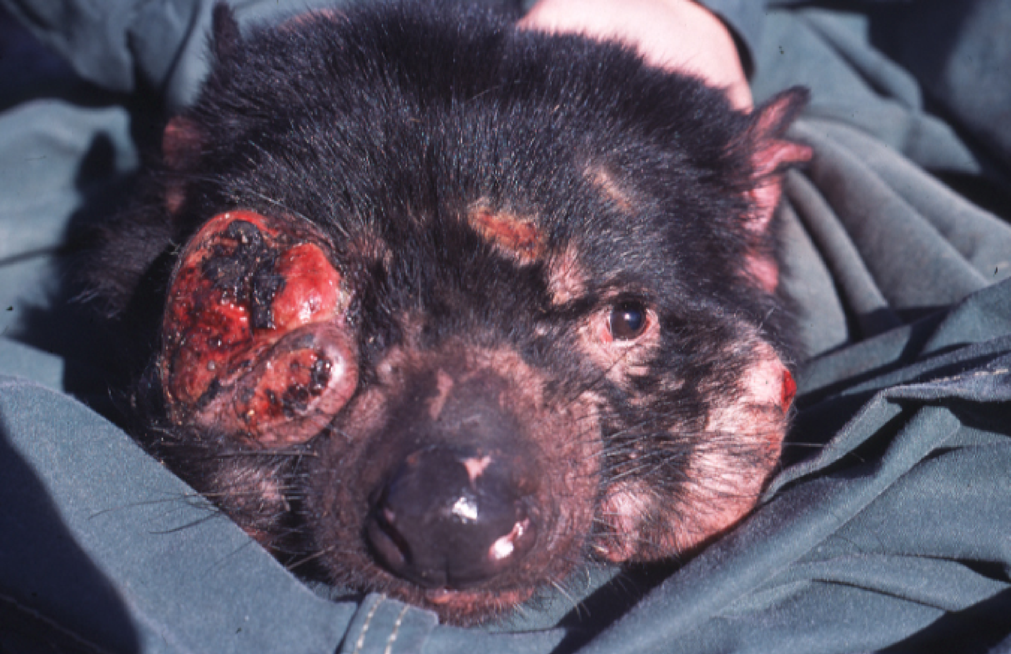- Scientists used tissue samples collected from 360 devils across Tasmania between 1999 and 2014 to look for genes that might have changed with the arrival of devil facial tumor disease (DFTD).
- The study found that two small genetic regions in the devils’ DNA, linked to cancer in other mammals, appear to have changed considerably in response to DFTD.
- These genetic changes have occurred in just four to eight generations of devils since the outbreak of DFTD, suggesting that Tasmanian devils are rapidly evolving resistance to the disease.
A transmissible cancer — the devil facial tumor disease (DFTD) — has decimated Tasmanian devil populations. The contagious cancer, first recorded in 1996, has wiped out over 90 percent of these animals in some parts of Tasmania. The disease kills virtually every devil it infects, but there may be some hope, researchers have found.
A new study published in Nature Communications suggests that Tasmanian devils are rapidly evolving resistance to fight the cancer, and may be able to escape extinction.
Scientists used tissue samples collected from 360 devils across Tasmania between 1999 and 2014 to look for genes that might have changed in response to DFTD. They compared the DNA of three independent devil populations before the arrival of DFTD and eight to sixteen years after DFTD arrived.

The team found that in all three devil populations, two small genetic regions in their DNA appear to have changed considerably in response to DFTD. Five genes in these two regions are linked to cancers in other mammals, researchers discovered, suggesting that Tasmanian devils are likely evolving resistance to the disease. Moreover, these genetic changes have occurred in just four to eight generations of devils since the outbreak of DFTD.
“The results are surprising,” co-author Hamish McCallum of Griffith University in TK said in a statement, “because rapid evolution requires pre-existing genetic variation and Tasmanian devils have low levels of genetic diversity.
The devil facial tumor disease has now spread across 95 percent of Tasmania. Only two regions — the far northwest coast and parts of the southwest — still remain disease-free, the authors write in the Conversation. Since Tasmanian devils are Tasmania’s top marsupial predators, their decline has resulted in a sharp rise in the activity of feral cats and other invasive species, and a decrease in native mammals.
Tasmanian devils are on the brink of extinction. But the researchers believe that the evolution of resistance to cancer could potentially save these marsupials.
“Our results suggest that devils in the wild may save themselves through evolution,” the authors write. “However, it is essential for managers to develop strategies that help the devils do so. For example, releasing fully susceptible devils that have had no exposure to the disease into populations where resistance is developing is likely to be counterproductive.”

CITATION:
- Epstein, B.et al. Rapid evolutionary response to a transmissible cancer in Tasmanian devils. Commun. 7:12684 doi: 10.1038/ncomms12684 (2016).